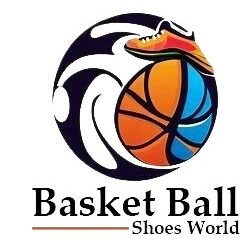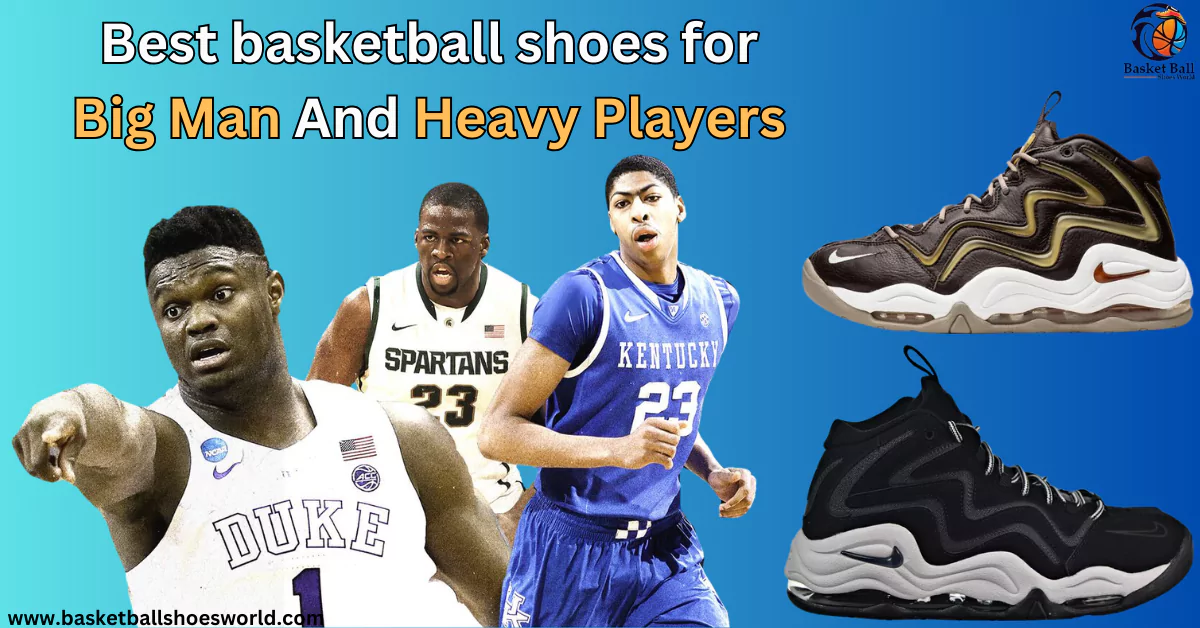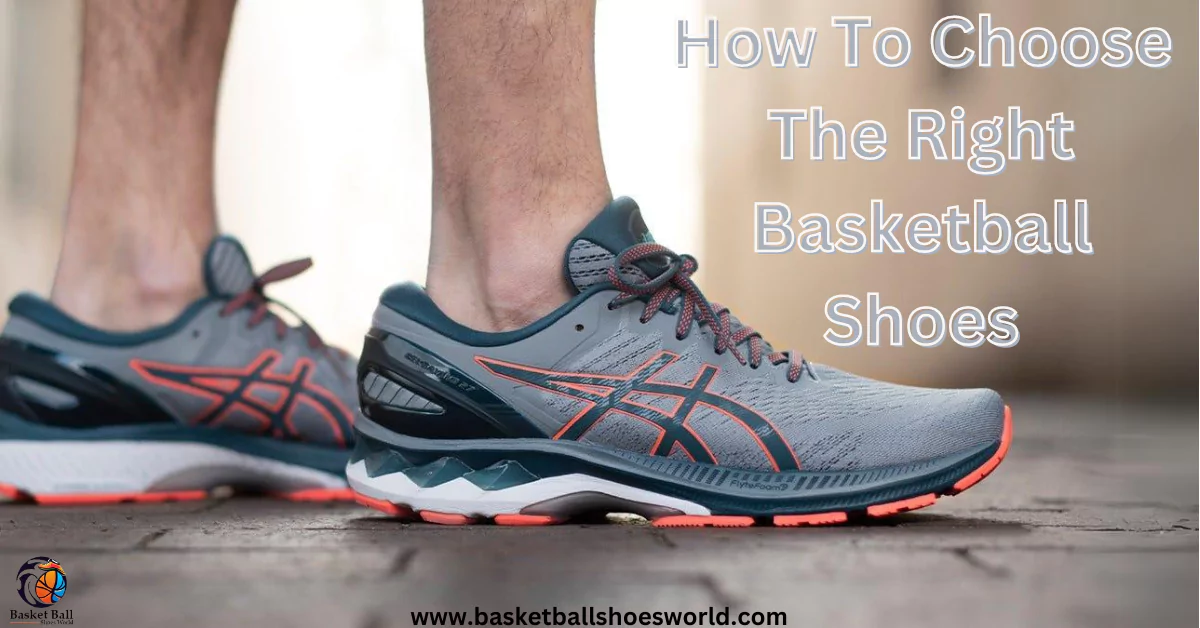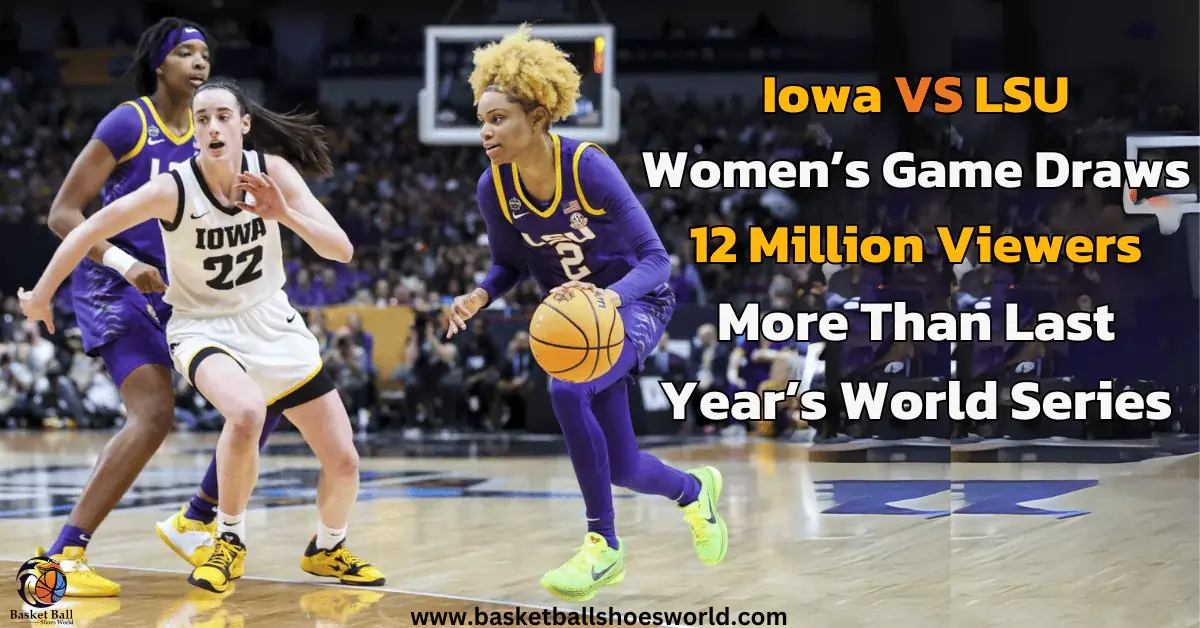For any basketball player, having the right equipment is essential for success. But perhaps no piece of equipment is more crucial than a well-fitting pair of basketball shoes. Improperly fitting shoes can lead to discomfort, blisters, and injuries, and hinder your overall performance on the court.
In my childhood, I had no idea how to select basketball shoes. Now, As a professional basketball player, I can advise you on how basketball shoes should fit because I have experience with many kinds of shoes.
In the fastest-growing world of basketball, my shoes are more than simply equipment. On the court, they serve as my hidden weapons. My basketball shoe fit becomes the silent architect of my play as I cut past opponents and turn quickly. It’s a personal journey to understand the shape of my foot, find the ideal fit, and gradually realize my full potential.
Table of Contents
Why Special Shoes for Basketball?

Basketball demands intense physicality, from sprinting to rapid direction changes on the court. Investing in quality basketball shoes is not just a luxury but a necessity to protect your feet from the rigors of the game and elevate your performance beyond what regular running shoes can offer.
Understanding Your Foot Anatomy

Just like snowflakes, no two feet are exactly alike. Understanding your unique foot anatomy is the first step toward finding the ideal basketball shoe fit. Here are some key aspects to consider:
- Length Matters
- Width Consideration
- Arch Support
- Heel Lock
- Midfoot and Forefoot
1. Length Matters

This seems obvious, but ensuring proper shoe length is vital. Your toes should have some wiggle room (about a thumb’s width) to prevent cramping and black toenails.
2. Width Considerations

Not all feet are created equal in width. If you have wider feet, look for shoes specifically designed for wider foot shapes. A snug but comfortable fit is key for optimal support and stability.
3. Arch Support

Your arch height (flat, medium, or high) plays a role in choosing the right shoe. Basketball shoes typically offer varying arch support levels to ensure proper alignment and comfort.
Essential Features for a Perfect Fit
Once you understand your foot’s anatomy, it’s time to explore the features of a basketball shoe that contribute to a perfect fit.
1. Heel Lock

A snug fit around the heel is crucial for stability and ankle support, especially during quick cuts and changes of direction. Look for shoes with a secure heel counter and proper lacing techniques (like the heel lock) to achieve this.
2. Midfoot and Forefoot

These areas require a secure fit as well, providing proper support during lateral movements. The way the shoe laces up should allow for adjustability and a locked-in feel.
Different Types of Basketball Shoes

A well-designed basketball shoe is a masterpiece of engineering, with each part contributing to a perfect fit and overall performance. Here’s a breakdown of the three main parts of a basketball shoe:
1. The Shoe upper part
This part of the basketball shoe cradles your foot and provides support, flexibility, and stability. The upper comes in different heights (high-top, mid-top, and low-top), each offering varying levels of ankle support. Choose the shoe type that best suits your playing style and needs.
- High Tops: Ideal for players who need maximum ankle support, such as centers and forwards.
- Mid Tops: Offer a balance between support and flexibility, perfect for all-around players.
- Low Tops: Provide the most freedom of movement but offer less ankle support, which is preferred by guards and those who prioritize agility.
2. The Midsole Basketball Shoes
Often the unsung hero, the midsole acts as a shock absorber, cushioning your landings and providing responsiveness for explosive movements. Common midsole materials include:
- EVA Foams: Lightweight and responsive, ideal for quick players who constantly change direction.
- Pressurized Air: Offers plush cushioning, perfect for players who jump frequently or perform high-impact dunks.
- Polyurethane: Durable and stable, making it a good choice for players who value a solid foundation over immediate responsiveness.
3. The Outsole Basketball Shoes
This is your point of contact with the court, and choosing the right outsole material is crucial for maintaining traction and preventing slips. Here are the two main types of outsole materials:
- Rubber: A classic choice, offering excellent traction on various surfaces, from polished indoor courts to rough outdoor playgrounds
- Synthetics: Modern synthetic materials cater to specific court types, offering enhanced grip or durability depending on your needs.
Try Basketball Shoes Before You Buy

Online shopping is convenient, but when it comes to basketball shoes, trying them on before purchasing is highly recommended. Visit a specialty sports store where trained staff can assist you in finding the right fit. Walk around, jump, and make lateral movements to ensure the shoes meet the demands of your playing style.
1. Consider Your Playing Style
Different playing patterns require exceptional functions in basketball footwear. For instance, if you’re a person who relies on shortcuts and modifications, of course, you could prioritize lightweight shoes for maximum agility. Centers, on the other hand, may lean toward excessive-top shoes for more suitable ankle aid throughout jumps and landings.
2. Sock and Insole Compatibility
Consider the type of socks and insoles you plan to use while playing. If you use thicker socks or custom insoles, account for these when trying on basketball shoes to ensure the fit remains comfortable and supportive.
3. Break-in Period
While it’s critical to discover a shoe that fits properly from the beginning, keep in mind that maximum basketball footwear requires a quick break-in period. Give yourself time to modify the brand-new shoes, and the shoes will steadily mildew to the shape of your toes.
Conclusion
Finding the perfect fitting basketball shoe is an investment in your performance, comfort, and overall well-being on the court. By understanding your feet, and the different components of a basketball shoe, and following these tips, you can ensure your footwear becomes an extension of yourself, allowing you to dominate the court with confidence. Remember, a well-fitting shoe isn’t just a piece of equipment; it’s your partner in achieving your basketball goals.
FAQ’s
How much room should there be at the end of a basketball shoe?
Always try the shoes on when standing as feet elongate and spread with stance. Insufficient toe room can result in nail problems and affect stability. Remember this rule of toe there should be about a half-inch of room beyond the longest toe available.
What are some common fit issues, and how can I address them?
Here are a couple of common fit problems and solutions:
Wide feet: Look for shoes specifically designed for wider foot shapes. Brands often offer wide or extra-wide options.
Heel slippage: This can be caused by a loose heel counter or improper lacing techniques. Try using the heel lock lacing method for a snugger fit.How often should I replace my basketball shoes?
The lifespan of a basketball shoe depends on various factors like playing frequency, court surface, and weight. Generally, shoes start to lose their cushioning and support after 300–400 miles of wear. Signs it’s time for a new pair include worn-out outsoles, decreased cushioning, or a loose fit.
How do I know if my basketball shoes fit perfectly?
Ideally, there should be about a thumb’s width (approximately half an inch) of space between the end of your longest toe and the front of the shoe. This space ensures your toes aren’t squished, especially during forward movements and jumps.
Why do my basketball shoes hurt so much?
If you are wearing the wrong size of shoes, it can cause pain in your feet. Similarly, wearing shoes that are too big for you will make your toes move around inside the shoe. There should be approximately half an inch of space between the end of your longest toe and the front of the shoe.
Is it normal for basketball shoes to hurt at first?
Yes, at first, but after two weeks of increasing activity, the shoes should naturally mold to your feet and provide a comfortable experience with minimal pain. This is the easiest and best way to break in new basketball sneakers without breaking your feet.



